#fadserver
Text
The emotional roller coaster through which Will puts Hannibal in S2 is crazy.
Will: I used to hear my thoughts inside my skull with the same tone, timbre, accent, as if the words were coming out of my mouth. Now... My inner voice sounds like you. I can't get you out of my head.
Hannibal:

Will: You're not my friend.
Hannibal:

Will: The light from friendship won't reach us for a million years. That's how far away from friendship we are.
Hannibal:
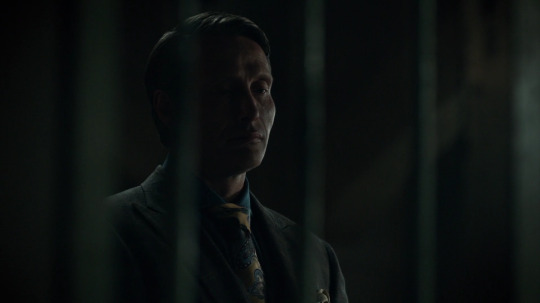
Will: What you did to me is in my head, and I will find it. I'm going to remember, Dr. Lecter. And when I do, there will be a reckoning.
Hannibal:
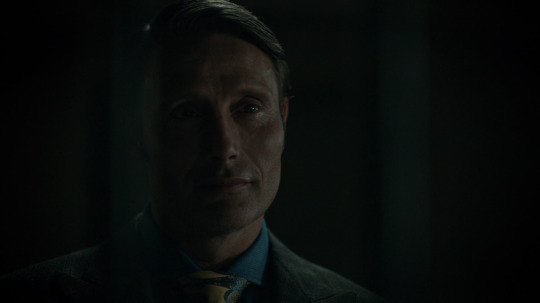
And all of this happens under two minutes...
#hannibal#nbc hannibal#hannigram#murder husbands#hannibal lecter#will graham#mads mikkelsen#hugh dancy#hannibal 2x01#kaiseki#my thoughts#fadserver
1K notes
·
View notes
Text


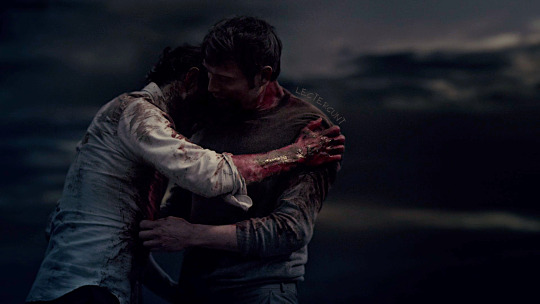

it's beautiful...
#lectercunt#myedits#hannibal edit#hannibal edits#hannibaledit#hannibaledits#nbc hannibal#hannibal lecter#will graham#hugh dancy#mads mikkelsen#the wrath of the lamb#twotl#murder husbands#hannibal nbc#hannigram#hannigram edit#hannigram edits#FADserver
2K notes
·
View notes
Text

#fadserver#nbc hannibal#hannibal#hannibal fanart#hannibal lecter#will graham#hannigram#murder husbands#amip's art
429 notes
·
View notes
Text
"frederick chilton must have some credibility as a psychiatrist if he's able to get a position as hospital administrator" and "frederick chilton fucked his way to the top" are two ideas that can and should coexist
#they sure coexist in my mind#hannibal#nbc hannibal#frederick chilton#willgrahamsbecoming#fadserver#i dont usually tag shitposts with that but i feel like forcing fad to reblog this one
813 notes
·
View notes
Text


Hannibal 1.01 & 1.03
#m*#hannibal#hannibal comparisons#will graham#hugh dancy#hannibal lecter#mads mikkelsen#hannibaledit#hannibal 1x01#hannibal 1x03#hannibal s1#horror#horroredit#horrortvfilmsource#crimeshowsource#userbbelcher#userstream#chewieblog#dailyflicks#cinemapix#tvandmovies#useroptional#smallscreensource#rainbowgifs#FADserver#uservici#userrlaura#hannibal e: apéritif#hannibal e: potage
271 notes
·
View notes
Photo

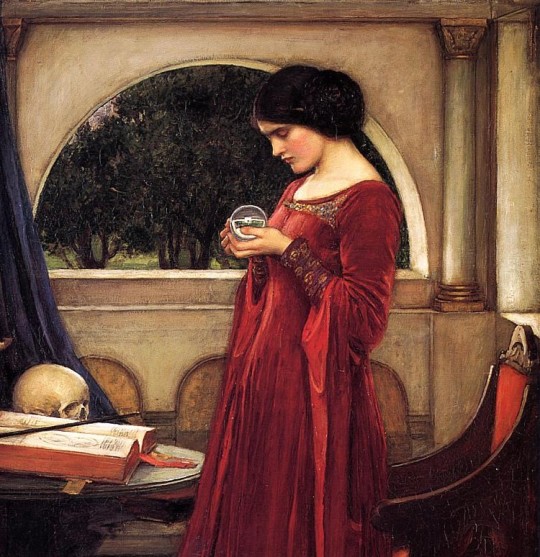

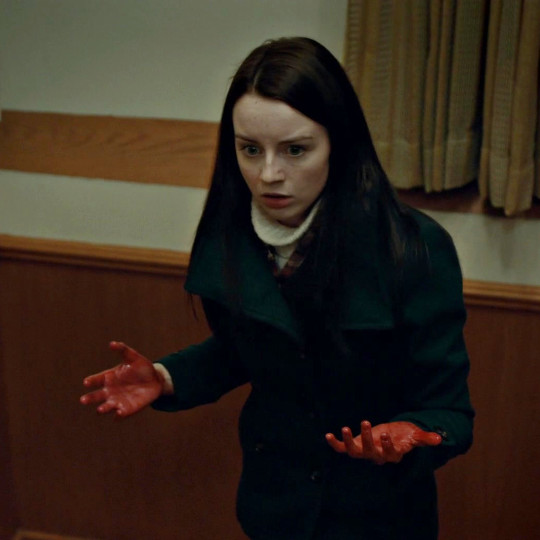
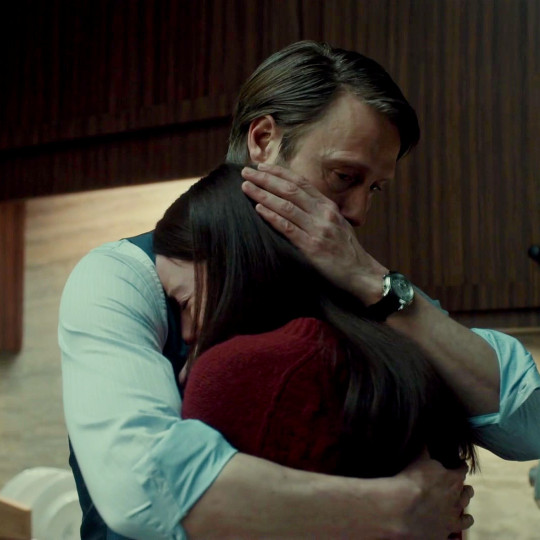


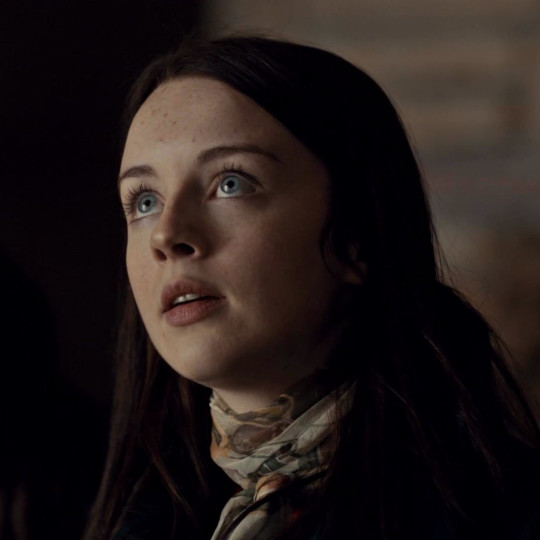


abigail hobbs + paintings
1X09, “trou normand” // john william waterhouse, the crystal ball (1902)
gustave moreau, study for lady macbeth (1851) // 1X03, “potage”
1X09, “trou normand” // egon schiele, death and the maiden (1915)
bartolome esteban murillo, penitent magdalene (1650) // 1X03, “potage”
2X12, “mizumono” // caravaggio, the sacrifice of isaac (1603)
[pt 1: alana]
#nbc hannibal#abigail hobbs#art comparatives#web weaving#FADserver#hannibal edit#i DO just keep making these every day#workin on a will one....hewwo
948 notes
·
View notes
Text
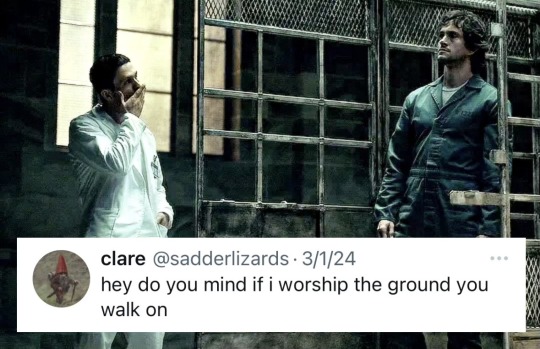
169 notes
·
View notes
Text
Red Dragons; Or, the problems of adaptation and the early serial killer procedural
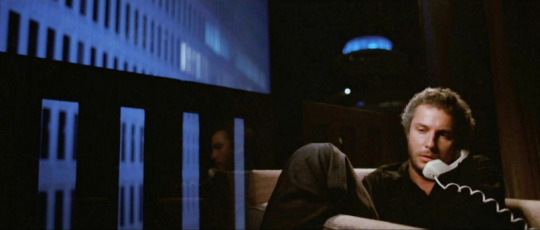
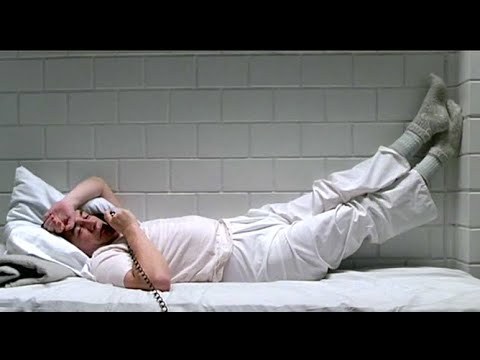
Red Dragon (1981) has the distinction of being the most frequently adapted Thomas Harris novel in the Hannibal Lecter "quartet." Despite the universal recognition of Jonathan Demme's Silence of the Lambs (1991), with iconic performances from Jodie Foster and Anthony Hopkins, and the more recent cult status of the series Hannibal (2013), which draws from all four books, it's Red Dragon, in some ways the most "obscure" Thomas Harris novel, that has lived three, arguably four, different lives onscreen over three decades.
Manhunter, visually, is an 80s noir feast set to atmospheric synths, but works within the newly established slasher genre as it attempts to make its own mark. The 1980s were truly the decade of the slasher flick, or the first wave thereof, and Red Dragon had to contend with expectations set up by the likes of Freddy Krueger and Michael Myers. Although this isn't a write-up about the history of slasher films, the basic premise I am going with is that the early slasher serial killer was portrayed as monstrous and, compared to our favorite killers today, one-dimensional antagonists. When I think about the origins of the slasher genre, I always think about the way the ineffectual psychologist in Halloween (1978) describes his former patient's "devil's eyes," behind which lived something "purely, simply evil." Dr. Loomis is dogged in his determination to impress upon the local authorities that Michael Myers is a force of nature who is unreachable by psychology, the study of the human mind. Furthermore, the slasher flick was unconcerned with the elements of the procedural: like in other horror subgenres, law enforcement are disposable foils that demonstrate the danger of the "monster" and the vulnerability of his targets and/or come in at the end to mark the conclusion of the spectacle (until the sequel, that is).In many ways this just seems like a quirk of history. I've been operating under the assumption that when Red Dragon came out in 1981, Thomas Harris introduced a type of story to a media landscape that had scant precedent for the serial killer mystery or procedural, distinct from the related nascent slasher horror subgenre, unlike today when a plethora of "murder shows" benefit from the success of this formula. Hannibal "the Cannibal" Lecter, the ur-murderer of the Thomas Harris fictional universe, became a cultural archetype that looms over modern crime television and film as he does over the investigations of beleaguered law enforcement officials in both Red Dragon (1981) and Silence of the Lambs (1988). When Michael Mann brought this first "Hannibal" novel to the screen in 1986, he too was breaking ground, to mixed reactions. Manhunter (1986), which lamentably lost its "Red Dragon" title due to studio publicity decisions, is both ahead of and a product of its time.
Manhunter, visually, is an 80s noir feast set to atmospheric synths, but works within the newly established slasher genre as it attempts to make its own mark. The 1980s were truly the decade of the slasher flick, or the first wave thereof, and Red Dragon had to contend with expectations set up by the likes of Freddy Krueger and Michael Myers. Although this isn't a write-up about the history of slasher films, the basic premise I am going with is that the early slasher serial killer was portrayed as monstrous and, compared to our favorite killers today, one-dimensional antagonists. When I think about the origins of the slasher genre, I always think about the way the ineffectual psychologist in Halloween (1978) describes his former patient's "devil's eyes," behind which lived something "purely, simply evil." Dr. Loomis is dogged in his determination to impress upon the local authorities that Michael Myers is a force of nature who is unreachable by psychology, the study of the human mind. Furthermore, the slasher flick was unconcerned with the elements of the procedural: like in other horror subgenres, law enforcement are disposable foils that demonstrate the danger of the "monster" and the vulnerability of his targets and/or come in at the end to mark the conclusion of the spectacle (until the sequel, that is).
Manhunter, and Red Dragon generally, is not a slasher flick. In fact, beyond the deliberately provocative reporter Freddy Lounds and a few men with barely any screen time who are killed off in brief fight scenes, the Great Red Dragon doesn't kill anyone at all. At the very least, no one is murdered in his signature serial killer style. The ritualistic murders occur before the film (and novel) begins, and the narrative revolves around understanding the mind of the serial killer and preventing him from killing again. At the same time, the conventions of the slasher film seem to limit the directions the film can go. Both Francis Dolarhyde and Hannibal Lecter (or "Lecktor") in the film have fairly opaque inner lives and limited screen time, while Thomas Harris notably does delve into the mindset and motivations of the "psychopath," positioning the killer as a subject of psychology, rather than an exception to it.
Furthermore, Manhunter's revised ending reframes one of two major female characters as a recognizable "final girl," and relegates the other to only existing in Will Graham's "happy ending," out of reach for the killer. This is the opposite outcome of the actual ending in the novel, and always seemed a bit tacked on to me, and not for artistic reasons. Will Graham can't actually end up broken and haunted because there has to be a clear demarcation between the serial killer "monster" and the "real" people who survive him. Blurring that distinction is, arguably, the "point" of Red Dragon. Michael Mann, perhaps, couldn't adapt the novel's conclusion "faithfully" because the conventions of this kind of psychological thriller weren't established, and did the best he could, introducing new building blocks for the "serial killer" archetype but not successfully pitching them to the wider public. Manhunter was not a financial or critical success upon its release, and refining the Thomas Harris "blueprint" was left to Jonathan Demme's Silence of the Lambs (1991), which made the strategic and hugely significant choice of allowing Hannibal Lecter to become a breakout character.
The next adaptation of the novel Red Dragon has seemed to me, frankly, like a bit of a cash grab. The 2002 Brett Ratner film, starring Edward Norton and Anthony Hopkins, capitalized off of the success of Silence of the Lambs and the release of a new Thomas Harris Hannibal Lecter novel. This film was for those who missed Manhunter in the 1980s, which many did, and those who considered a prominent Hannibal Lecter played by Anthony Hopkins essential to an adaptation, which many also did. The most recent adaptation of Red Dragon is the cult hit drama Hannibal (2013), which focuses on the main characters of the novel, Hannibal Lecter and FBI profiler special agent Will Graham, and can arguably be seen as two different adaptations of the novel. Both of these more recent adaptations are more coherent and recognizable as exemplars and/or subversions of the serial killer procedural, playing off of the tropes introduced to the genre by the source material itself, like a particularly grizzly and morbid ouroboros.
So, we have many points of data to consider if we wanted to determine what makes a good adaptation of the novel Red Dragon.
Ironically, for a story that laid important groundwork for a whole subgenre of film and TV, Red Dragon is hard to adapt and definitely hard to update. (So is Silence of the Lambs for that matter, but that is a whole other kettle of fish.) To my mind, the main two difficulties stem from both a strength and a "weakness" of the original novel.
A strength: Harris takes advantage of contemporary technology to create a clever mystery at the center of the novel. The problem: this particular bit of technology was only truly at home in its first 1986 adaptation, Manhunter. Both Red Dragon (2002) and Hannibal (2013) had to make compromises to adapt the central plot device. Red Dragon (2002) avoids the issue by simply setting the film in the 1980s, relying on the audience's knowledge of VHS technology of that time, which, since it was 2002, was more or less assured for an R-rated movie. Hannibal (2013) sidesteps the issue more or less entirely by making the "mystery-solving" pieces functionally irrelevant. (At one point, Hannibal Lecter makes a dismissive reference to the killer using "social media" the way the original story used VHS and the matter never comes up again.) To date, this central plot twist has never been successfully adapted for contemporary audiences in the 2010s - or 2020s for that matter. The 2010s show itself, in its choices, implicitly makes the argument that the technical "mystery" elements of novel weren't really all that important to its overall message. Depending on your point of view, this argument is successful. However, this argument also depends on the irony that the creators of the show can dispense with the set pieces of the serial killer procedural and take artistic license because the source material introduced those expectations into the genre to begin with. Tradeoffs all around.
Another challenge to adaptation is sometimes considered a "weakness" of the book: after the real "plot" of the novel vis a vis Will Graham's hunt for the "Tooth Fairy" begins, Harris makes the bold choice of adding the point of view of the serial killer du jour himself, diving into the eponymous Red Dragon's motivations and experience, which almost takes place in a parallel universe apart from that of Will Graham, Lecter, and the BSU/BAU until both narrative threads collide in the climax. The problem: this choice "derails" the suspense of the whodunit and adds character development for a relative stranger to the reader. Every adaptation of Red Dragon changes the structure of the plot so that the parallel storyline of Francis Dolarhyde, the Red Dragon, is pared down and interspersed with the main narrative (usually) earlier on. Every adaptation has decided that Thomas Harris's precise plot structure isn't actually essential. This judgment call is also ironic: Thomas Harris apparently "flubs" the standard conventions of the serial killer procedural that did not yet exist because he was in the middle of inventing them.
But, we may ask, isn't this the nature of adaptation? The answer: of course it is. Adjusting plot mechanics based on the period of the adaptation and restructuring the pacing for film/television are some of the most basic changes one can make when adapting a book for the screen. However, that does open up interesting questions of theme and intent. What is essential to the Red Dragon story? What is it, in the end, all about?
Leaving aside all caveats about the subjective nature of interpretation or the possibility of a work being "definitively" about anything, I believe there are two broad interpretations of the novel and all existing adaptations favor one or the other.
Red Dragon is a novel about how much monster there is in a, well, man and vice versa: the fate of the soul is at stake. This is a clear theme of Will Graham and Hannibal Lecter relationships in every iteration: to catch a particularly "monstrous" killer requires understanding said killer, but if you understand them too well, what does that say about you? And, more importantly, where does that leave you? (In the original Will Graham's case, nowhere good, with a broken marriage and an existential crisis, or, when we catch up with him in the sequel, in the Florida Keys, now a miserable drunk. For the modern Will Graham of the 2010s series, TBD.) Empathy itself instills horror, which is a fairly complex idea to explore in the late 1970s when Thomas Harris was writing the novel. (In fact, I will always find it remarkable that Thomas Harris had the foresight to research the methods of criminal profilers at the FBI at the beginning of the discipline and the BSU itself, getting in on "the ground floor" for better or worse for horror fiction and actual forensic psychology.) It's also very cross-media, as identification with violence on screen (and the "male gaze" itself) were emerging as key features and problems of film available to critique. The focus on "video" and boundaries between self and other in the novel seem very prescient.
Alternatively: Red Dragon is a novel about the limits of personal transformation. Thomas Harris seems preoccupied with the idea of ritual murder as an alchemical process motivated by the desire to become something "transcendent." (While one can see the mystical whimsy in a man thinking he's becoming a dragon, a figment of William Blake's imagination, "Buffalo Bill's" or Jame Gumb's desire to transform "into a woman" in a somehow "not-trans" way in Silence of the Lambs falls egregiously short and reflects more on a failure of imagination on the part of Thomas Harris and his readership than anything else.) I find the metaphysical aims of these serial killers interesting for two reasons. First, sexual sadism is de-emphasized as a motive, which is not typical of the serial killer archetype of the time: the most prominent serial killers in fiction (such as in early slasher films) kill because of some perverse urge, as an extension of the "evil" men they are or were made to be. Their murders aren't about anything. Both Francis Dolarhyde and Jame Gumb , in contrast, think they are setting out to accomplish something and that the brutality of their actions is beside the point. This is what constitutes their insanity, as this is clearly not true.
The actual nature of their murders and the ugly psychoanalytical implications of their compulsions are the ultimate limitation on their aspirations to "becoming." No matter what they think is going on their heads, they direct their violence toward women, and it is women who ultimately put an end to their reigns of terror. (Molly Graham and Reba McClane in Red Dragon and Clarice Starling, among others, in Silence of the Lambs.) The female characters serve as a "reality check" for the dreamy, bloody men of the books, which is earnestly ham-fisted on the part of Thomas Harris but also significant for the genre. Arguably none of the women in the first two Hannibal novels play the role of "final girl," that is, an "innocent" woman who acts as audience surrogate and restores socially acceptable norms at the end of the film. (The focus on such a "good girl's" experience means you can take a comfortable distance from the murderer and put yourself in the position of "victim." You are also anticipating that she will be spared in some way, which restores a sort of moral balance to the universe: the other victims in some way "had it coming.") In Red Dragon, the active female characters are not sorted into the "virgin/whore" dichotomy: in fact, even the actual sex worker character (Freddy's girlfriend) remains unscathed, and her feelings are more relevant to the other characters than her occupation, humanizing Freddy postmortem. The victims and potential victims, almost all of them mothers, clearly did nothing "wrong" and their sexual objectification is placed squarely on the shoulders of the men watching them. The women left standing at the end of the novels don't just "escape" the killers: they're the ones who put the killers down despite the male characters' inadequacies, and they, unlike a Jason or a Michael Myers, stay down.
Of course, I think both broad themes are very present and active in Red Dragon, and, probably unsurprisingly, Hannibal Lecter is something of a cipher for both threads. If our main concern is coming to terms with our empathy and capacity for violence (or "men's," I suppose), Hannibal Lecter nimbly eludes being a subject of empathy, instead setting himself up as the observer and interpreter of other killers. His insight into other people is certifiably superior: he's literally a renowned psychiatrist. The possibility of a Hannibal Lecter raises the stakes enormously for our own navel-gazing, as we are not just wondering, along with Will Graham, whether the wicked deeds of others might appeal to us, but are actually facing up to the reality that the killer has been beside us as a peer all along, not the subject of scrutiny. If our main concern is the limitations of personal transformation, Hannibal Lecter is a very sharp foil for our doomed killers because while he can easily identify the signs of a transmutation complex, it isn't especially relevant to him personally. Hannibal Lecter doesn't kill and eat people because he's turning into anything. As he famously tells Clarice Starling as she attempts to interview him, "Nothing happened to me. I happened." He already is what he is, rooted in sensual reality - like the women in the books - and he is merely indulging his appetites and aesthetics. This, I think, is why he prevails and why he can make himself at home on the side of our woebegone detective protagonists when he feels like it. Hannibal Lecter is never doomed: he can always happen to you.
Manhunter favors the first tendency, and is not particularly interested in Francis Dolarhyde's "Becoming" as the Great Red Dragon. This allows for a very intense and nuanced meditation on identification and the role of empathy that artistic representations of violence invoke. The focus on "seeing" gains a whole other dimension in the context of film, as there are many interesting things going on with perspective and scene composition. 2002's Red Dragon favors the second tendency, if I had to make the judgment call. Although the film is probably the most "faithful" adaptation of the events of the novel, I do think you can come away from the film not remembering that Will Graham has any particular problem/gift of heightened empathy or that losing himself by identifying with Hannibal Lecter or Francis Dolarhyde was ever a serious possibility. (Even at the climax, when Graham to a "violent" place he ends up taking on the persona of Dolarhyde's abuser, not Dolarhyde himself, which is entirely an invention of the film.) What the film does emphasize is the quixotic journey of Francis Dolarhyde, giving quite a lot of room to his backstory as well as his inner conflict between his deadly, "spiritual" inclinations and his romance with Reba. Also, and most importantly, this is the one adaptation of Red Dragon that actually allows Molly Graham to kill Francis Dolarhyde when he tries to make the Graham family another ritual sacrifice. There's an intentional symmetry in the novel between the murders and Dolarhyde's ultimate demise at the hand of the desirable "mother," which really underlines the juxtaposition between the story Dolarhyde is telling himself and what he's actually been doing.
Perhaps this is me tying a bow on it all by claiming that Bryan Fuller's Hannibal (2013) manages to incorporate both major themes, but I do think it's very interesting to at least think of the series as two different adaptations of Red Dragon. The first adaptation is obvious: the second half of season 3 "does" Red Dragon, and honestly gives fantastic depth to Francis Dolarhyde's inner world and his quest for transformation through death. However, I also think you can view the entire series as a whole as an adaptation of Red Dragon. I say this because the main bulk of the existing seasons of Hannibal cover the period of Will Graham and Hannibal Lecter's relationship prior to Lecter's capture, which is only depicted (in exposition) in the novel. Aside from the incorporation of various plot points and characters from the novels Hannibal (1999) and Hannibal Rising (2006) in season 2 and season 3, one could place the (first) three seasons of Hannibal entirely in the world of Red Dragon. I think this is especially suggested in the first episode, which opens with Will Graham doing a visionary walk-through of a family annihilation that pretty much exactly hearkens back to his first major scene in the novels and the films: later in the episode, Graham's inner monologue about imagination and taste - the first substantive insight we get into the character - is rewritten as dialogue between Graham, Jack Crawford, and Hannibal Lecter. So, even while the plot of the series begins at a different point in time, stylistically, we're back at the beginning of Red Dragon anyway. This interpretation allows for a lot more flexibility if we're looking for major themes coming from the source material. Identification and empathic intimacy are the animating features of the central Will-Hannibal dyad: at the same time, the psychic landscapes Will Graham (and to a lesser extent characters like Alana Bloom or Bedelia du Maurier) explore alongside Hannibal Lecter are tied up in questions of transformation and limitation.
In the series, Lecter not only pinpoints the urges to "become" in other killers but also becomes deeply invested in Will Graham's capacity for metamorphosis as an expression of identification and intimacy. If, as I've suggested previously, Hannibal Lecter exists as a grounded corrective to the soulful longings of murderers who wish to change through the deaths of others, this seems like a contradiction on its face. However, if we take this interpretation of Hannibal Lecter in the novels into our viewing of the series, the tension between Hannibal and Will sharpens into a very intimate exchange of knowing and refusing to know one another. Hannibal Lecter seems to have no interest in Will Graham becoming something or someone else via the alembic of murder. When he tempts Will, he is not (ultimately) encouraging the profiler to look away from the world to some impossible dream that would mark him for death like the other murderers they hunt together. Hannibal Lecter is very interested in Will Graham becoming a killer, that is, embracing all of who he already is with clarity and insight, which is a transformation rooted in psychology and is also entirely possible. Will then resists self-knowledge, or bringing his self-knowledge into the material world. Hannibal resists his own identification with another human being, and realizes (a bit too late) that there may be a way to bring Will down to Earth (and closer to him) without destroying him, as he inevitably does - gleefully - to his other proteges and projects.
No adaptations of Red Dragon have embraced the novel's ending. In the end of the original novel, Will Graham is left in the hospital, resigned to the fact that he's lost his wife and stepson, and drifts into a drug-induced dream state, where he doesn't dream of "Molly leaving" or Dolarhyde, but rather visits a memory from the time shortly after he'd killed Garret Jacob Hobbs. He remembers visiting Shiloh, the site of a particularly bloody battle in the American Civil War, and has an epiphany. At the time, he'd considered the battlefield "haunted," but now realizes that it is, in fact, "indifferent." In the natural world, there is no mercy, "we make mercy": "There is no murder. We make murder, and it matters only to us." Graham accepts that he has the capacity to "make murder; perhaps mercy too." Murder, however, is what he understands. He wonders if "vicious urges" in humanity and the "dark instinctive knowledge" of those urges could act as a vaccine against the "virus" of violence, allowing for the possibility of civilization that has "overgrown the basic reptile brain." He doesn't settle on an answer, but does believe he was wrong about Shiloh. "Shiloh isn't haunted - men are haunted. Shiloh doesn't care."
Granted, this would be hard portray on screen. A filmmaker would have to resort to voice over, perhaps, or merely suggest where Thomas Harris declares. Another option would have Will's epiphany take the form a letter to Hannibal Lecter, an answer to a message Graham never receives. In this letter, which Jack Crawford destroyed, Lecter says we live in a "primitive time," "neither savage nor wise. Half measures are the curse of it. Any rational society would either kill me or give me my books." He wishes Graham a "speedy convalescence," and hopes "he will not be too ugly" after recovering from the wounds the Great Red Dragon gave him. "I think of you often," he writes, and then writes his name. Lecter believes "half measures" are the true poison: Graham, if he knew his dream was a reply to his counterpart, would perhaps take the position that "half measures" are the antidote, a strategic ambivalence that, perhaps, makes mercy as possible as murder. Such a reply, however, would lack conviction. It would, however, betray that in the end this is a conversation vulnerable to distance and time and that there is no appeal to a higher power or state of enlightenment, just to one another. Perhaps the last scene of "The Wrath of the Lamb," the final episode of season 3 of Hannibal, is the closest we'll come to seeing a cinematic portrayal of this conclusion. The profiler taking the serial killer into his arms, where they hold each other like lovers, and then throwing both of them off a cliff and into the sea. Not a half measure at all.
In the meantime, all of these versions of Red Dragon are worth a look.
#nbc hannibal#hannibal lecter#will graham#manhunter 1986#red dragon#thomas harris#silence of the lambs#slashers#francis dolarhyde#murder husbands#essay#fadserver#hannibal meta
60 notes
·
View notes
Text
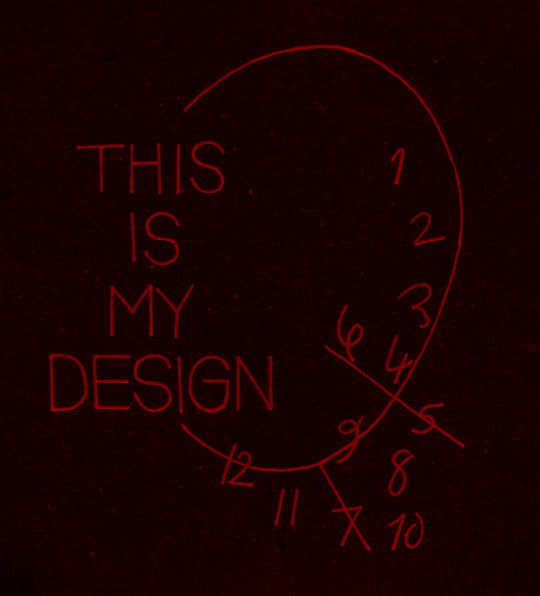
Stay with me
#hannibal#hannibal and will#hannibal art#hannibal fan art#hannibal fanart#hannibal lecter#will x hannibal#hannigram#hannibal is a comedy#nbc hannigram#hannibal nbc#handlettering#hand lettering#illustration#fanart#hannibal x will#will graham#will graham fanart#fadserver
225 notes
·
View notes
Text
someone who is good at the economy please help budget for Hannibal (NBC) Bryan Fuller is dying
233 notes
·
View notes
Text
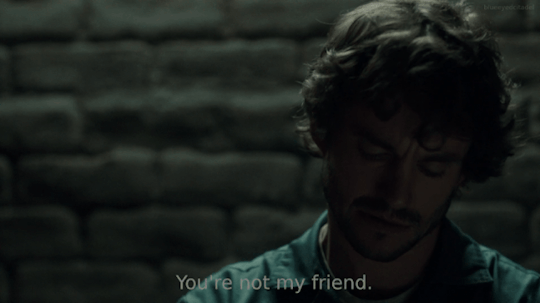


---


#hannibal#nbc hannibal#hannibaledit#hannigram#murder husbands#hannibal lecter#will graham#mads mikkelsen#hugh dancy#parallels#my gifs#hannibal 2x01#kaiseki#hannibal 3x04#aperitivo#fadserver
555 notes
·
View notes
Photo
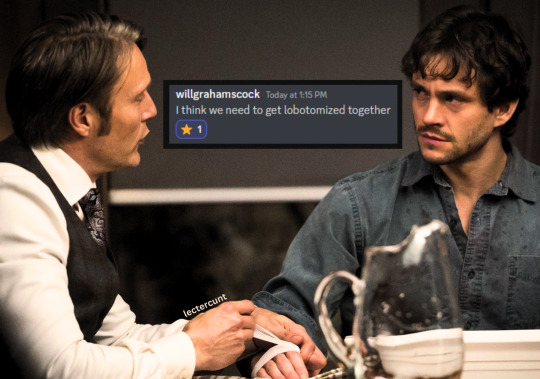
#lectercunt#FADserver#willgrahamscock#alex#hannigram#hannigrammeme#hannigram meme#hannibaledit#hannibal edit#nbc hannibal#hannibal nbc#willgraham#will graham#hannibal#hanniballecter#hannibal lecter#randall tier#hannibalshitpost#hannibal shitpost#hannibal meme#hannibalmeme
3K notes
·
View notes
Text
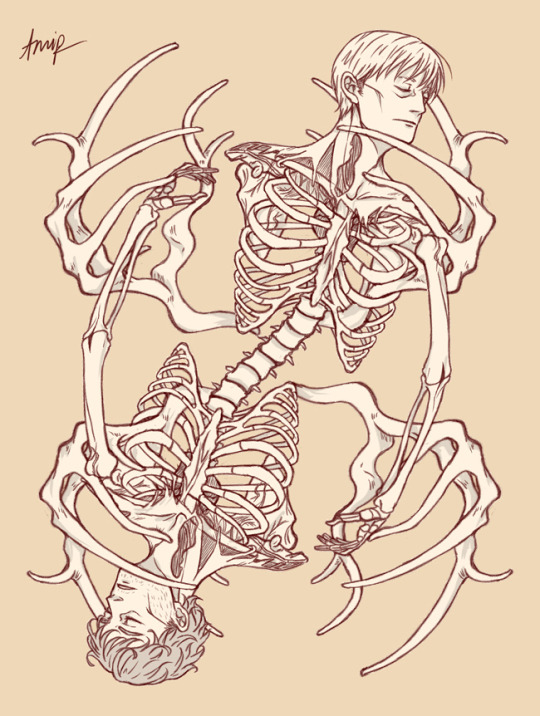

"We're conjoined. I'm curious whether either of us can survive separation".
#fadserver#nbc hannibal#hannibal#hannibal fanart#hannibal lecter#will graham#hannigram#murder husbands#hannigram fanart#amip's art#body horror
188 notes
·
View notes
Text

may as well just hand him the deck tbh
#he looks so upset and betrayed and tbh. real.#hannibal#nbc hannibal#frederick chilton#hannibal art#hannibal fanart#my work#willgrahamsbecoming#fadserver
203 notes
·
View notes
Text
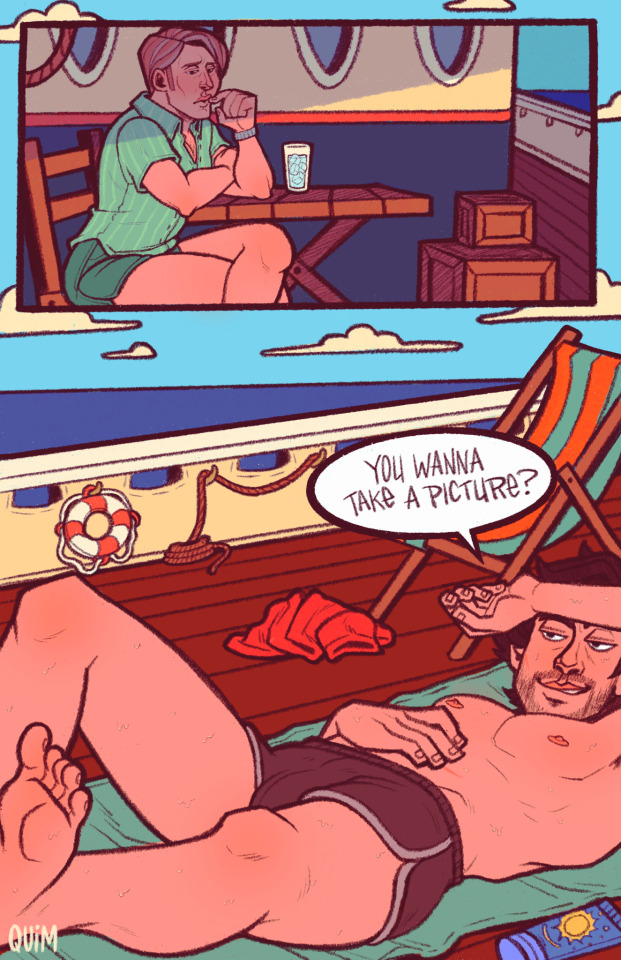
hannibal getting caught peeking. ;)
@willgrahamscock @lectercunt @cas-swiftie @fragile-teacup @thembo-cowboy @bloodpoetry @thedarkmongoose @thethirdstageofdeath @rosyronkey @eveljerome @nvybloo @mischiefmetalandmagic @scarletmothlet @countlector @hanni-tablvr @thecorilove86 @swampthing07
186 notes
·
View notes
Text

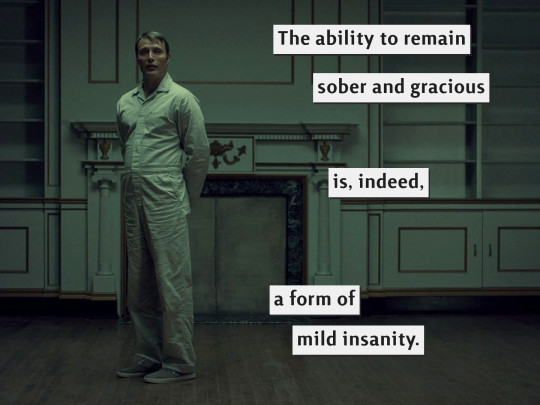
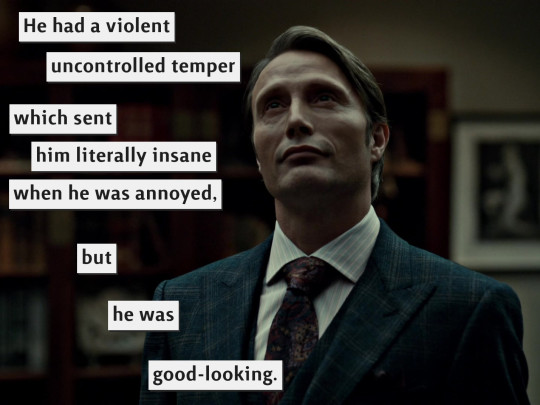
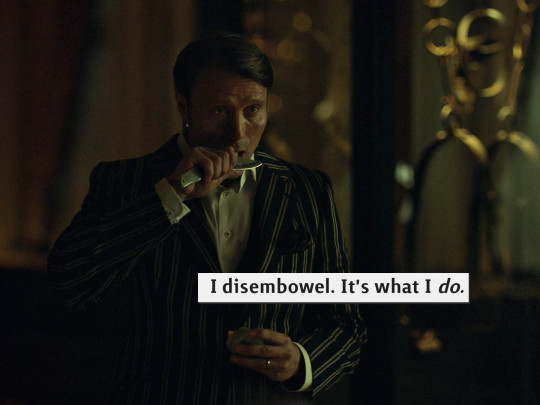

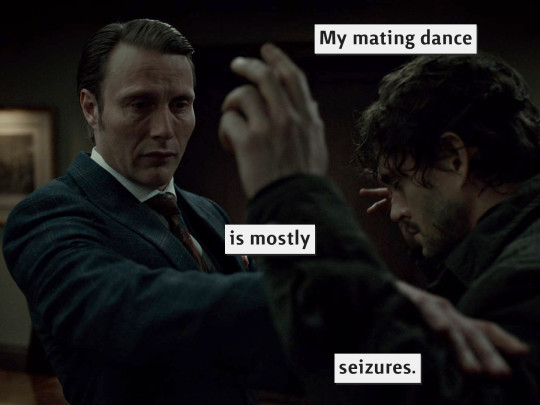

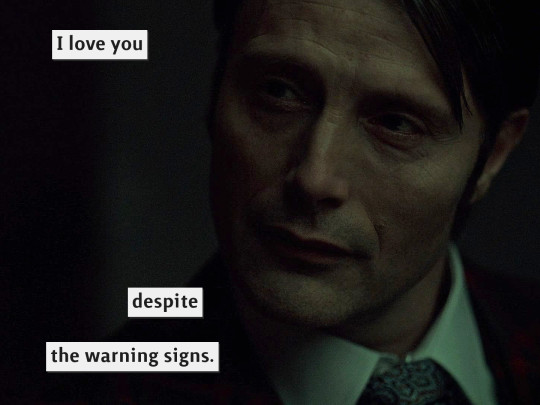
hannibal lecter + troubled birds
there's no way in hell nobody has ever thought to mash these up in a full decade of fandom i simply realized that i had not seen it yet. so. filling a need!
331 notes
·
View notes